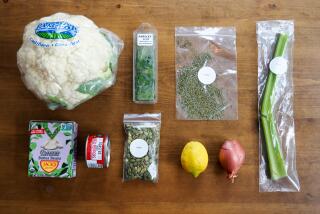Steps consumers can take to reduce the risk of food- borne illness from fresh produce:
- Share via
* At the store, purchase produce that is not bruised or damaged. If buying freshly cut produce, be sure it is refrigerated or surrounded by ice.
* At home, chill and refrigerate foods. After purchase, put produce that needs refrigeration away promptly. (Fresh whole produce such as bananas and potatoes do not need refrigeration.) Fresh produce should be refrigerated within two hours of peeling or cutting. Leftover cut produce should be discarded if left at room temperature for more than two hours.
* Wash hands often. Hands should be washed with hot, soapy water before and after handling fresh produce, raw meat, poultry, seafood, as well as after using the bathroom, changing diapers or handling pets.
* Wash all fresh fruits and vegetables with cool tap water immediately before eating. Don’t use soap or detergents. Scrub firm produce, such as melons and cucumbers, with a clean produce brush. Cut away any bruised or damaged areas before eating.
* Wash surfaces often. Cutting boards, dishes, utensils, and counter tops should be washed with hot, soapy water and sanitized after coming into contact with fresh produce, raw meat, poultry or seafood. Sanitize after use with a solution of 1 teaspoon of chlorine bleach in 1 quart of water.
* Don’t cross contaminate. Use clean cutting boards and utensils when handling fresh produce. If possible, use one clean cutting board for fresh produce and another for raw meat, poultry and seafood. During food preparation, wash cutting boards, utensils or dishes that have come into contact with fresh produce, raw meat, poultry or seafood. Do not consume ice that has come into contact with fresh produce or other raw products.
* Use a cooler with ice or use ice gel packs when transporting or storing perishable food outdoors, including fruits and vegetables.
Source: USDA
More to Read
Eat your way across L.A.
Get our weekly Tasting Notes newsletter for reviews, news and more.
You may occasionally receive promotional content from the Los Angeles Times.










